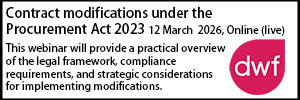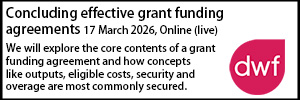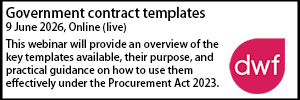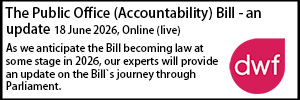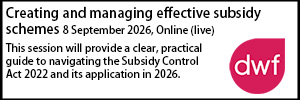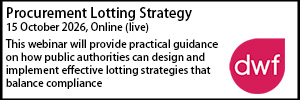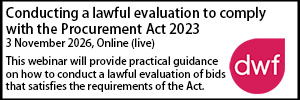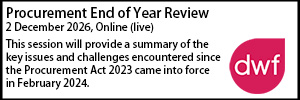Lessons to be learned from poorly drafted contracts
- Details
 A Court of Appeal ruling in a contract dispute involving a NHS trust highlights the importance of parties having a shared understanding of what is being agreed, write Justin Mendelle and Tola Odedoyin.
A Court of Appeal ruling in a contract dispute involving a NHS trust highlights the importance of parties having a shared understanding of what is being agreed, write Justin Mendelle and Tola Odedoyin.
It is common for parties to a construction contract to apportion risk and limit liability by specifying the damages that one party will be obliged to pay to the other in the event of a breach. However, it is by no means straightforward to always capture commercial intentions with precise legal drafting.
Background
On 7 November 2011, the claimant NHS trust in Royal Devon and Exeter NHS Foundation Trust v ATOS IT Services UK Ltd [2017] EWCA Civ 2196 entered into a contract with the defendant, ATOS IT Services UK Limited (the “Contractor”) for the provision of information management services (the “Contract”) for a period of five years with a total contract price of £4,939,207.00. In 2016, unhappy with the performances of the system, the NHS Trust terminated the Contract and sought damages for wasted expenditure to the sum of approximately £7.9 million. The Court had to consider the meaning and effect of the caps on liability.
The Contract contained within clause 8.1.2(b), a provision which sought to cap the Contractor’s liability for breach of all defaults under the Contract, with such limits not exceeding the amount stated in Schedule G. Paragraph 9 of Schedule G provided:
“9.2: The aggregate liability of the Contractor in accordance with sub-clause 8.1.2 paragraph (b) shall not exceed;
9.2.1: for any claim arising in the first 12 months of the terms of the Contract, the Total Contract Price as set out in section 1.1; or
9.2.2: for claims arising after the first 12 months of the Contract, the total Contract Charges paid in the 12 months prior to the date of that claim.”
Paragraph 9 of Schedule G was a bespoke amendment negotiated between the parties and did not form part of the standard form contract.
The NHS Trust argued that the liability provision in paragraph 9.2.2 of Schedule G was not capable of being construed because it is “not clear whether there is a single cap calculated by reference to a claim or whether there is a separate cap for each claim that arises. Multiple caps for each claim arising is inconsistent with the concept of a cap”. Accordingly, the NHS Trust argued that the cap should be declared unenforceable. The Contractor argued that the liability provision was valid and enforceable: the cap was to be determined by the timing of the first default, or in the alternative, there were two caps, the first cap applying to any claim arising in the first 12 months of the Contract and the second cap applying to any claims arising after the first 12 months.
The issue facing the Court was whether the wording in paragraph 9.2.2 was so uncertain and ambiguous, that it would render the liability provision unenforceable.
First Instance Decision in the Technology and Construction Court
HHJ O’Farrell did not agree with the arguments raised by the NHS Trust and found that clause 9.2.2 was enforceable. In coming to her decision, she noted that the court is concerned primarily with ascertaining whether the intention of the parties would be readily understood “by a reasonable person, having all the background knowledge which would have been available to the parties.” She went on to say that “the starting point is clause 8.1 which clearly states that the parties have agreed to limit their respective liabilities under the Contract. The wording of clause 8.1.2(b) indicates that the parties intended to impose a financial cap on the total liability of either party for all Defaults” and “although the language used in paragraph 9.2 is not helpful”, there was a clear intention between the parties to have a cap on liability. In her view, there was a singe cap on liability, which was dependent on the timing of the claims.
The NHS Trust appealed, abandoning its previous argument relating to the unenforceability of paragraph 9.2, and instead submitted that the TCC got it wrong when it suggested there was one aggregate cap for liability as opposed to two separate caps on liability.
Decision in the Court of Appeal
The Court of Appeal allowed the NHS Trust’s appeal on the basis that HHJ O’Farrell had erred in her findings that there was one aggregate cap for liability as opposed to two separate caps.
In coming to that decision, LJ Coulson considered which of the alternate views of the liability provisions made the most common sense. On a proper construction of the provision, he found that “the language of paragraph 9.2 points emphatically towards there being two separate caps.” He concluded that this made the most sense since paragraph 9.2.1 provided a higher cap on liability because the Contractor was carrying out high value work within the first 12 months, whereas paragraph 9.2.2 provided for a lower cap on liability due to the Contractor doing lower value work in years 2, 3, 4 and 5. The court observed that there was “nothing surprising about this arrangement”.
The Court of Appeal considered that “the natural meaning, and the meaning which yields the least bizarre consequences” of clause 9.2 was the interpretation that provided “a high cap for defaults occurring in the first year and a separate, lower cap for defaults occurring in subsequent years”. This they considered, made the most commercial common sense and was therefore to be preferred.
Implications
Liability clauses are often fiercely negotiated, with multiple versions of complicated provisions going back and forth between the parties. This case once again shows that a lack of clarity can have adverse consequences, leaving both parties to a contract uncertain as to the legal effect of bespoke drafting. Practically, one should always work through multiple scenarios to ensure that everyone has a shared understanding of what is being agreed – the drafting should then ‘simply’ implement that understanding.
Justin Mendelle is a partner and Tola Odedoyin is a trainee solicitor at Sharpe Pritchard. Justin can be reached on 020 7061 5948 or
Sponsored articles
Unlocking legal talent
Walker Morris supports Tower Hamlets Council in first known Remediation Contribution Order application issued by local authority
Lawyer (Planning and Regulatory)
Contracts Lawyer
Senior Lawyer - Planning, Property & Contracts Team
Legal Director - Government and Public Sector
Principal Lawyer - Planning, Property & Contract
Locums
Poll
15-07-2026 11:00 am


























